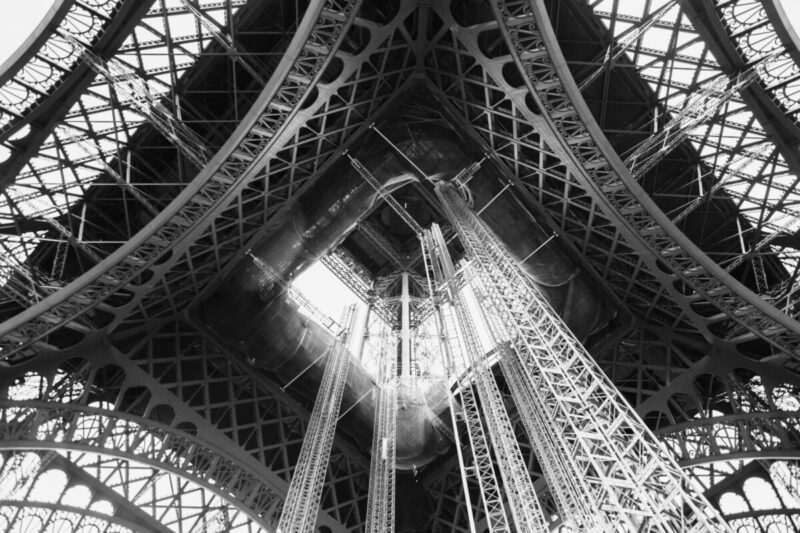Some photographers might think that Black & White Photography belongs in the past, but countless costumers still request these old-school, classy shots from photographers. And some of them just look jaw-dropping. It has never been this easy making monochrome photographs.
So…
Why not improve your skills with these tips below?
Get to Know Your Greys
Yes, these photos are black and white, but they are mostly a combination of various shades of grey. The more shades you incorporate into these images, the greater the depth they will ultimately have. These are what defines your photos by incorporating brightness and providing texture.
If you have only a few limited shades of grey, your pictures will most definitely end up looking dull.
To add more grey tones to your shot, consider incorporating a flash, shooting from different vantage points to better capitalize on the natural light, and to throw more shadows over your subject.
Grey tones will determine whether the mood is a somber one, or whether it is a snapshot of a bright and uplifting event. You really want to pay attention to these.
Use Contrast
With no other colors to tell the story you just have to use what you have. That is why it is important to always look for contrast. These two colors exist on the opposite end of the spectrum and while black represents the absence of light, white ultimately define it.
The very best of these pictures have large amounts of light, with adequate black for defining the lines, shapes, and positioning of the subjects. Then the greys fill everything up and add character. The more white that you incorporate into your shot, the more defining contrast you’ll get.
Consider Lighting
A front-lit texture will give you a few murky details for shots that are meant to have a somewhat ambiguous nature. Back-lit texture, however, will really make the details stand out.
So it’s ultimately up to you how you wish to capture the scene or a subject and stage the lighting accordingly.
If you want viewers to see the texture of a dress, the stunning variation of flowers in a bouquet, or other relatively small-sized elements, choose your back-lighting carefully.
Incorporate Patterns
The ordered repetition of patterns can be an excellent addition to your images. These draw attention and are helpful when they are on the subject.
For instance, if you are shooting the anniversary photo of an elderly couple, the patterned afghan on the couch is a great feature to include. It will add appeal to the image by providing an additional element that draws the eye in.
Positioning is critical in this instance. While the lack of color will make your subject a natural identifiable focal point, the presence of a distinguished pattern in the distance or something scattered around can feel disconnecting.
As such, the use of patterns should always be strategic and well-planned.
Change Color Photos into Black & White
Don’t be afraid to offer and print images in black and white for photos that did not shoot well in color. This is really important to do when you’ve captured key requested images and have gotten less-than-stellar results because of bad lighting or other technical issues.
While these will not correct all the lighting-related issues, they can definitely make unappealing shots more aesthetically interesting.
Many times, the absence of extensive color makes these photos a lot easier to clean up digitally.
Shoot in Raw (RAW + JPEG)
Consider shooting in RAW mode from the outset. This doesn’t give you as much leeway in planning BUT it will provide you with more flexibility when cleaning them up.
If you shoot RAW and JPEG files at the same time and set your camera to its monochrome Picture Style/Picture Control/Film Simulation mode you get the idea of how the shot will look in B&W:
Also, you can look for plugins and other tools that incorporate elements of silver. Silver isn’t exactly grey when used in this capacity, but it definitely has a very stunning, brightening effect.
Shades of silver add more depth and dimension, create a higher level of illumination, and make even the most basic of images look far more sophisticated and refined.
Silver tones are great for wedding and anniversary pictures because they fit well with these typically elegant themes.
Use Long Exposures
With monochromes, long exposure always works best. This blurs the movement a bit and makes for better textural contrast.
Using filters is also a great way to diversify your results and add better textural contrast.
Get to Know Your Camera
Before taking on any big B&W project, make sure you spend some time playing around with the different settings and tools that are available to you. Wait until you’ve become comfortable playing with them.
You should also be aware of the fact that any effects that you weren’t able to work immediately into images can usually be done in the edit.
That is why RAW settings and JPEG are generally the top choices for those who are relatively new to this type of photography.
You can use anything from wide-angle lenses like 11-16 mm, to moderate telephoto lenses like 85 mm, but you have to know how to use its sensor.
If you know how to use the sensor, with some knowledge of dynamic ranges and the use of live view you can make those photos stunning and dynamic with high-resolution details.
Work on Your Skills
Like with anything else, it takes practice, and there is no better way to practice photography than actually taking photos. And the skill of taking these monochrome photos will make you appreciate the colors.
It will make you take care of all the details and give you a better understanding of how to use and manipulate both natural lighting and the lighting settings on your camera.
For many people, the very first step in mastering these is simply learning how to use the cameras according to their highest level of functionality, and gaining a better understanding of the available plugins and other software tools.
When you know your equipment well, you can achieve the results you want. While any camera is fine, I recommend using a full-frame camera for premium quality photos.
The more you practice taking pictures in monochrome, the easier it gets to infuse them with the texture and definition that is just breathtaking.
Make sure you spend some time taking single-subject shots indoors (or anywhere where the lighting is direct) so you can adjust it the way you need.
You will see some progress with time, and then become more reliant upon your camera and its technical capabilities to make those photos noir.
And remember, use all these to complement the story you want to tell.


